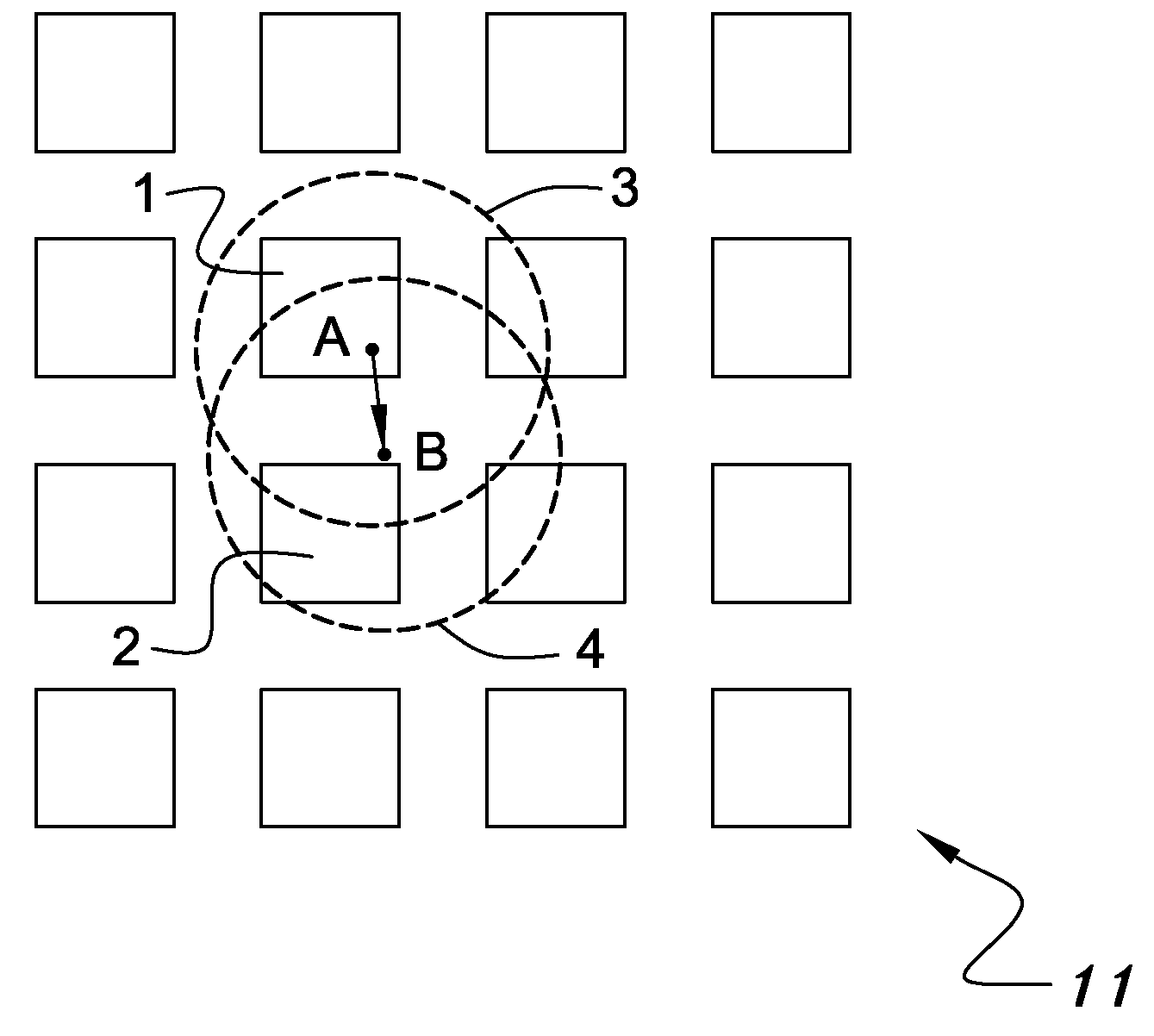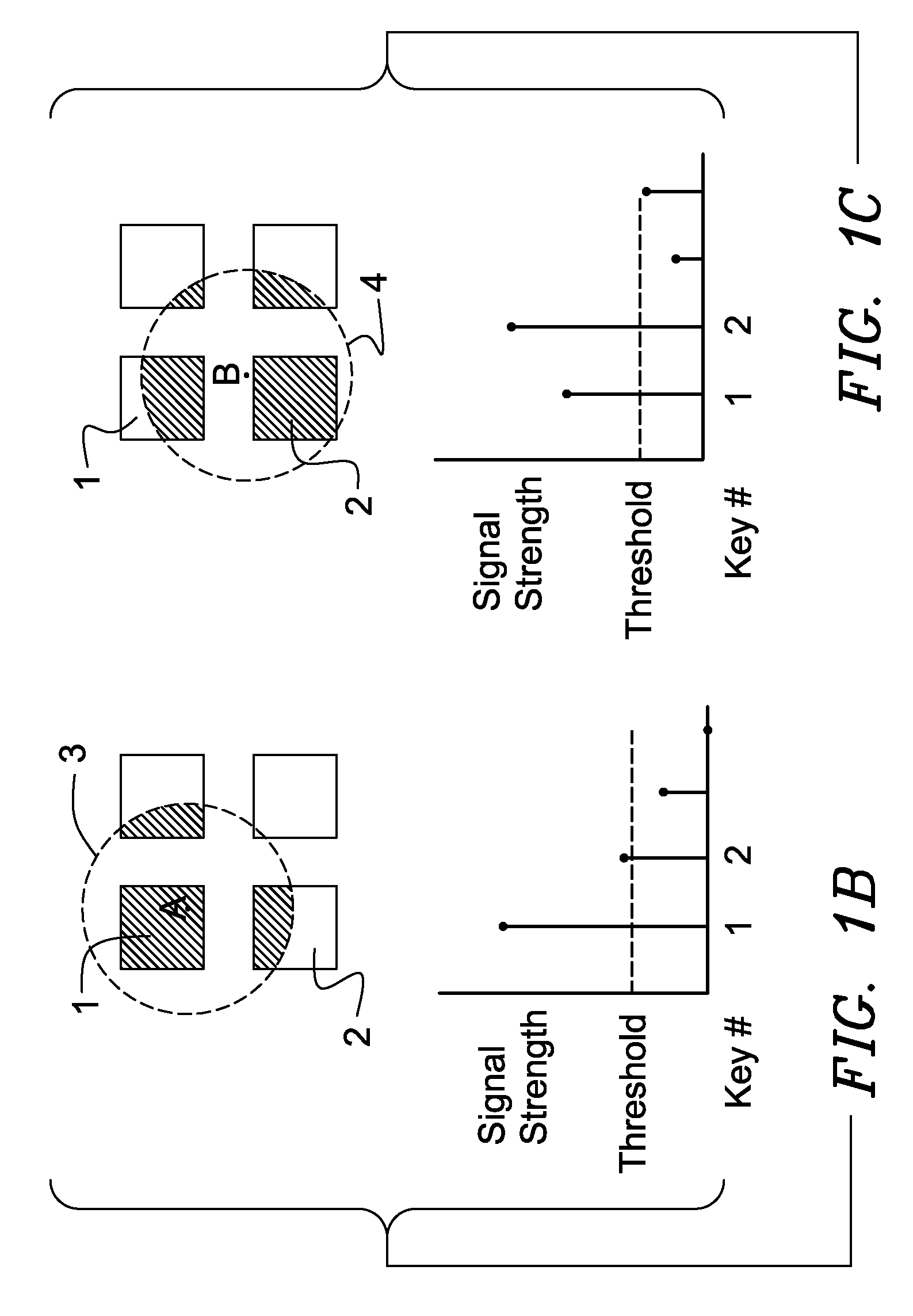Capacitive keyboard with non-locking reduced keying ambiguity
a keyboard and keying technology, applied in the direction of instruments, coding, pulse techniques, etc., can solve problems such as keying ambiguity, and achieve the effect of removing keying ambiguity and signal strength valu
- Summary
- Abstract
- Description
- Claims
- Application Information
AI Technical Summary
Benefits of technology
Problems solved by technology
Method used
Image
Examples
Embodiment Construction
[0022]In studying this Detailed Description, the reader may be aided by noting definitions of certain words and phrases used throughout this patent document. Wherever those definitions are provided, those of ordinary skill in the art should understand that in many, if not most instances, such definitions apply to both preceding and following uses of such defined words and phrases. At the outset of this Description, one may note that the terms “include” and “comprise,” as well as derivatives thereof, mean inclusion without limitation; the term “or,” is inclusive, meaning and / or. The word ‘key’ as generally used in this Disclosure and as specifically used in the Claims attached hereto refers to a touchable portion of a mechanical to electrical transducing device that is non-bistable in nature. This term specifically excludes conventional mechanical switches in which two or more electrical conductors are moved into or away from contact with each other to make or break an electrical con...
PUM
 Login to View More
Login to View More Abstract
Description
Claims
Application Information
 Login to View More
Login to View More - R&D
- Intellectual Property
- Life Sciences
- Materials
- Tech Scout
- Unparalleled Data Quality
- Higher Quality Content
- 60% Fewer Hallucinations
Browse by: Latest US Patents, China's latest patents, Technical Efficacy Thesaurus, Application Domain, Technology Topic, Popular Technical Reports.
© 2025 PatSnap. All rights reserved.Legal|Privacy policy|Modern Slavery Act Transparency Statement|Sitemap|About US| Contact US: help@patsnap.com



